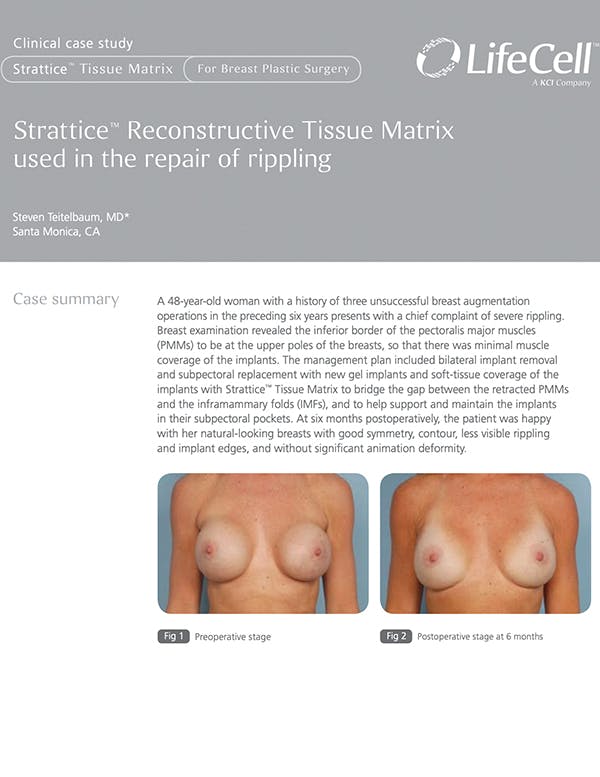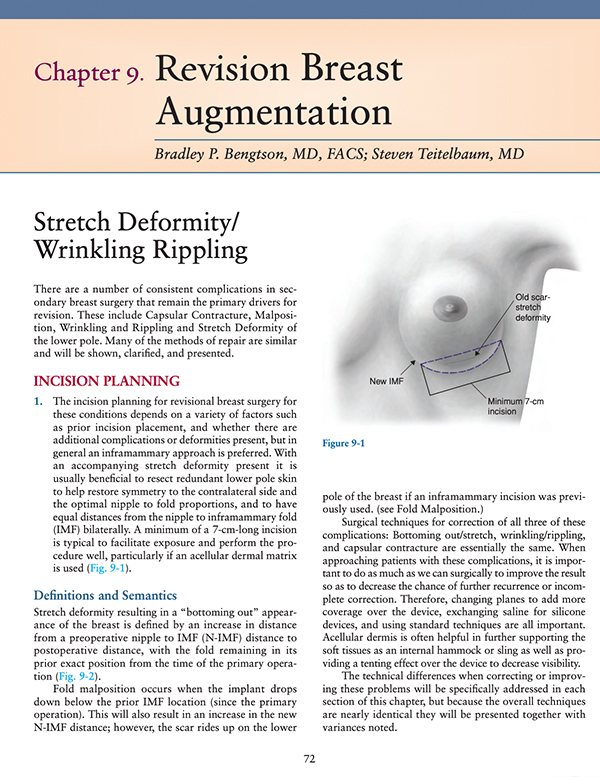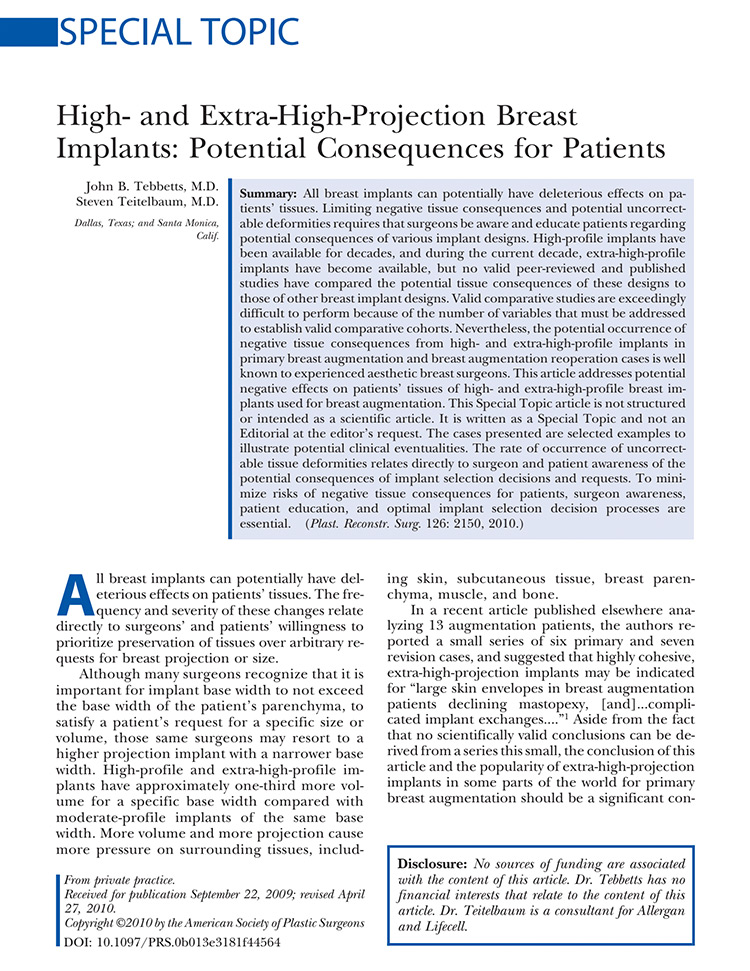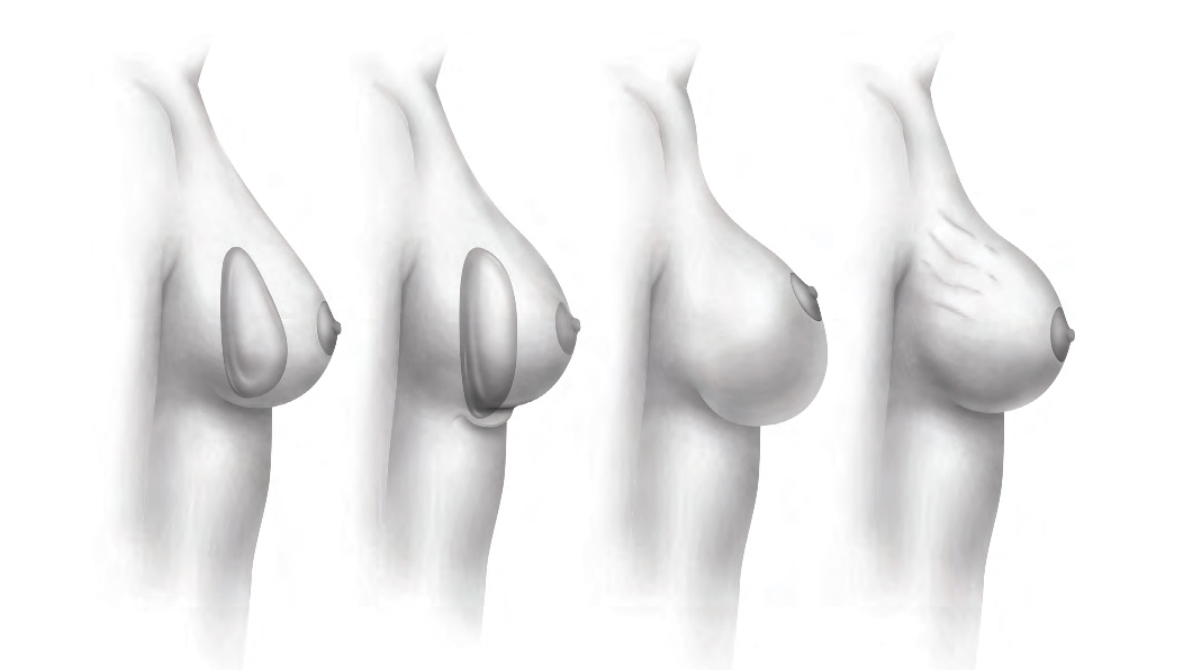The first is thin tissue. Rippling never happens in overweight patients, but it can happen to patients of normal weight who have little of their own breast tissue. Patients will report rippling coming or going with the gain or loss of even a few pounds. Dr. Teitelbaum once had a frantic call from a patient who was a dancer in a musical that was touring the country. She said she had been dancing so much and eating so little that she had developed distressing rippling. What could she do, she wondered? The answer was not surgery; it was gaining a few pounds. Telling a patient in Southern California to gain weight is not something that goes over so well with patients, but that is the most reliable method to treat rippling - and the least expensive and least risky as well.
Rippling

Of all the problems that a breast augmentation can have, perhaps rippling is the condition that makes patients the most miserable. When thin women bend over, it is not uncommon to see some rippling in the lower outer breast. However, when the problem involves the upper inner breast, or if the entire breast has an unnatural and excessively rippled feel, then that is a problem that justifies consideration for breast revision surgery.
Dr. Teitelbaum revises unsatisfactory breast augmentation procedures with expert-level precision. His understanding of the anatomy of the breasts and the ways to achieve the optimal aesthetic make him one of the most trusted surgeons for breast revision surgery. You may have rippling in your breasts, but you don't have to live with it. Dr. Teitelbaum offers an honest approach to help you achieve results that look natural.
This illustration from one of Dr. Teitelbaum’s book chapters demonstrates the difference between three closely related problems: fold malposition, stretch, and rippling.

In this guide for surgeons Dr. Teitelbaum describes the powerful techniques he helped develop for using ADM’s in difficult breast augmentation revisions.
There are three reasons rippling develops:
Understanding Breast Rippling Causes and Solutions
The second reason breasts can ripple is an under-filled breast envelope. For example, if the implant is too small it can drop, settle, and fold in the bottom of the breast. More commonly, this occurs from thin, damaged, and stretched-out skin that has lost its ability to hold the implant firmly against the body. The third reason for rippling can be by the implant itself. Implants are manufactured to be soft and pliable, therefore implants have the potential to develop folds. If implants were made to be totally resistant to folds, they would feel very firm and look too round and too bulky. Textured implants ripple more than smooth implants, and saline implants more than silicone implants. Dr. Teitelbaum determines the best treatment after diagnosing which of these issues are the source of your problem.
If the implant is in front of the muscle and the tissue is thin, he may suggest moving the implant behind the muscle. If the implant is behind the muscle or the muscle is damaged then the situation gets more difficult. Fat can be injected to thicken the coverage or acellular dermal matrix (ADM) such as Strattice and Alloderm can be used. Though patients laugh when it is suggested to them, even a modest weight gain can make a huge difference. It is certainly more natural, less expensive, and even better-looking than any surgical remedy. If the tissue is very loose, sometimes a lift or a slightly larger implant can be used. Some implants ripple more than others: saline more than silicone, textured more than smooth. Also, implants of different "profiles" have different tendencies to ripple. Finally, highly cohesive implants such as the "410" or the "CPG" can be used but only if the tissue is tight enough to be capable of holding them in place (since they are teardrop shaped the tissue has to be able to keep them from rotating, which could otherwise cause a deformity).



